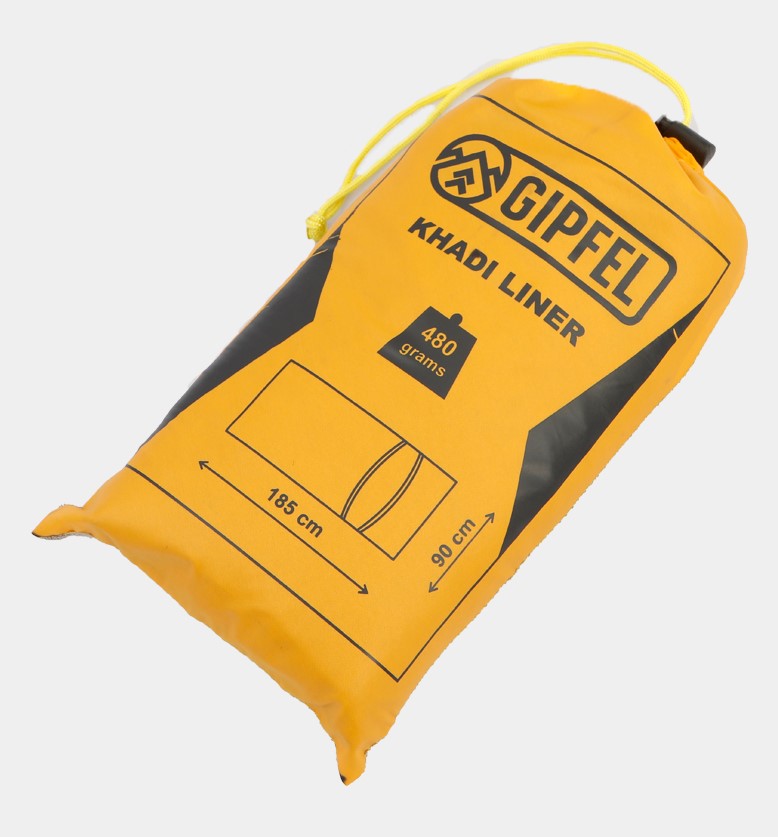Sleeping bag liners are the humble but a critical piece of gear for outdoor adventures; severely underrated, but with huge benefits.
Imagine sleeping in a sleeping bag night after night, and not being able to wash the sleeping bag. The liner offers a solution here, and more.
Sleeping bag liners provide many benefits:
- Improved hygiene. Sleeping bag liners are significantly lighter, and easier to wash than sleeping bags themselves. Between outdoor or backcountry trips, it is easier to wash a liner than the whole sleeping bag. Or if going on extended trips, a couple of liners, help extend the time you can go without washing the sleeping bag itself. Or if you are sleeping in hotels with uncertain hygiene of bed linen used, or on train journeys, sleeping bag liners prove to be the solution for ensuring hygiene.
- Lightweight sleeping bags. In warm weather or fair-weather conditions, sleeping bag liners can function as sleeping bags. They are lighter and more economical than a sleeping bag.
- Additional thermal insulation & warmth. Liners provide additional warmth during colder nights. The additional amount of thermal insulation is dependent on the materials used. They can also act as vapour barriers depending on the materials used, and help with preventing evaporative heat loss.
- Comfort: Some liners, depending on the materials provide, next-to-skin comfort for those who are very discerning about such comfort vis-à-vis the fabrics used in a sleeping bag.
- Economics: By using a sleeping bag liner, you will extend the life of your sleeping bag, which is typically a bigger investment.
SLEEPING BAG LINER MATERIALS
At Gipfel, we make 10 models of sleeping bags, based on material and shape! Very few outdoor companies invest into as many models, as we do. There is a reason for this.
We offer liners in the following materials:
- Cotton: Mummy Style / Envelope Style
- Hand spun yarn
- Silk: Mummy Style / Envelope Style
- Nylon
- Fleece
Each material provides certain advantages or disadvantages with respect to weight, price, thermal insulation or warmth, how quickly they dry, comfort to skin, and breathability. Below is a comparison chart for our sleeping bags.
| Liner material/Properties | Weight (gms) | Economics/Price | Insulation/Warmth | Quick drying? | Comfort to skin | Breathability |
| Cotton | 290-300 | Low | Medium | High | ||
| Khadi | 460-480 | Low | Low Medium | High | ||
| Silk | 160-180 | High | High | Quick | High | High |
| Nylon | 120 | Low | Quick | Medium | Low | |
| Fleece | 500 | Low | Very high | Medium | High | Low |
SLEEPING BAG LINER SHAPE
We make our liners in both Mummy shape and Envelope or Rectangular shape.
Mummy shape is more form fitting and compact, saves on some weight, and can prevent heat loss slightly better than an envelope shaped liner. But on the flip side, can be constricting for some body types and based on sleeping position preferred.
For an Envelope shaped liner, flip the pros and cons as versus the above. Cost wise, there is no difference. Please note the prices mentioned below are as of November 2019, and may change over time.
| Liner shape => | Mummy | Envelope/Rectangular | ||
| Material | Weight (gms) | Price (Rs.) | Weight (gms) | Price (Rs.) |
| Cotton with Lycra mix | 290 | 925 | 300 | 925 |
| Khadi / Linen | 460 | 480 | ||
| Silk | 160 | 3250 | 180 | 3250 |
| Nylon | 120 | 860 | ||
| Fleece | 500 | 970 | ||







